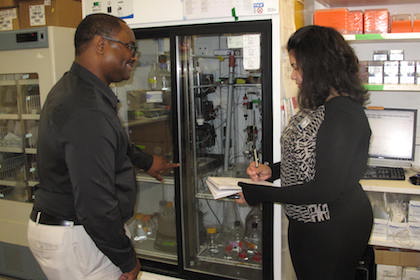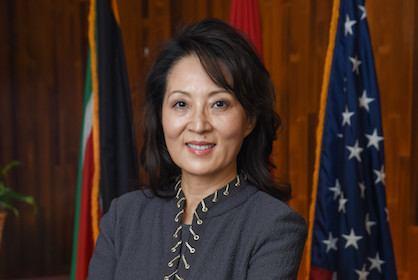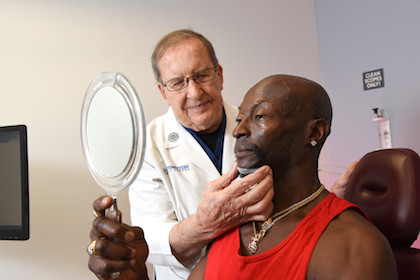Achieving breakthroughs in research

Their work may have begun with a tiny idea, such as how a bacterium manipulates its environment to survive and then attack the human body. But results can be game-changing, leading to new strategies to fight off disease, or perhaps drugs to combat cancer. UT Southwestern’s premier scientific minds continued to make significant discoveries in 2015, earning them well-deserved recognition in their fields.
Exceptional Scientific Work Leads to Prestigious Honors
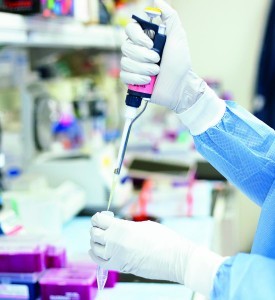
Research advancements by UT Southwestern scientists continued to be recognized at the highest pinnacles, with recognition in 2014-2015 from the National Academy of Sciences (NAS), the American Academy of Arts and Sciences (AAAS), Howard Hughes Medical Institute (HHMI), the Breakthrough Prize, The Rockefeller University, and regionally, The Academy of Medicine, Engineering and Science of Texas.
“These outstanding scientists are illuminating fundamental processes related to some of the most serious illnesses of society in the 21st century,” said Dr. Daniel K. Podolsky, President of UT Southwestern, who holds the Philip O’Bryan Montgomery, Jr., M.D. Distinguished Presidential Chair in Academic Administration, and the Doris and Bryan Wildenthal Distinguished Chair in Medical Science. “Their exceptional work is not only inspiring, but showcases the critical value and importance of broadening our understanding of the molecular, cellular, and biological processes that underlie disease states as a foundation for improvements in clinical care and disease prevention.”
UT Southwestern now has 23 NAS members on its faculty, 19 members of the National Academy of Medicine, 17 members of the AAAS, and 13 HHMI Investigators, placing the institution among the most elite group of academic medical centers in the country.
Dr. Lora Hooper
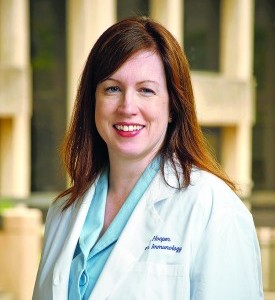
Dr. Lora Hooper, Professor of Immunology and Microbiology, was elected to the National Academy of Sciences for her research on understanding how resident intestinal bacteria influence the biology of humans and other mammalian hosts.
Discoveries by Dr. Hooper, a Howard Hughes Medical Institute Investigator, have helped explain how we peacefully coexist with the trillions of beneficial bacteria present in our intestinal tract and may ultimately reveal alterations in these populations that can make it possible for disease-causing bacteria to overtake them.
Dr. Hooper’s work has provided insights into the molecular mechanisms that mediate the interaction between the remarkably dense and complex community of intestinal microbes and the intestine to maintain health. These normal flora not only limit the ability of pathologic agents to cause infections, but also influence susceptibility to many other disorders, such as diabetes, heart disease, and obesity.
“We live in harmony with a huge community of microbes within our own bodies, neither allowing them to invade vital tissues nor trying to eradicate them. This balancing act has puzzled immunologists for decades. Lora has made some of the most spectacular discoveries in the field,” said Dr. Bruce Beutler, Regental Professor, Director of the Center for the Genetics of Host Defense, recipient of the 2011 Nobel Prize in Physiology or Medicine, and holder of the Raymond and Ellen Willie Distinguished Chair in Cancer Research, in Honor of Laverne and Raymond Willie, Sr.
Dr. Hooper, also a member of the Center for the Genetics of Host Defense, holds the John W. Uhr, M.D. Distinguished Chair in Immunology, and is a Nancy Cain and Jeffrey A. Marcus Scholar in Medical Research, in Honor of Dr. Bill S. Vowell.
Dr. Steven Kliewer
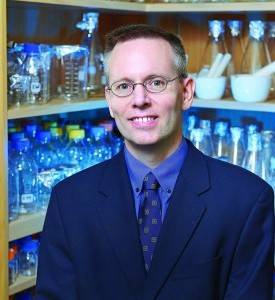
Dr. Steven Kliewer, Professor of Molecular Biology and Pharmacology, was elected to the National Academy of Sciences for his research in the field of orphan nuclear receptors.
Dr. Kliewer, holder of the Nancy B. and Jake L. Hamon Distinguished Chair in Basic Cancer Research, identified the therapeutic target for a class of drugs used to fight Type 2 diabetes. Since his recruitment, he has shown that a hormone secreted by the gut – FGF19 – regulates bile acid metabolism in the liver.
Dr. Kliewer runs a joint laboratory with Dr. David Mangelsdorf, Chairman of Pharmacology and a Howard Hughes Medical Institute Investigator, who earlier had identified the bile acid receptor and its downstream targets in the liver. Their work has identified two novel targets (the bile acid receptor and FGF19) that are now clinical candidates for new therapeutic interventions for gastroenterological disorders, including non-alcoholic fatty liver disease.
“Dr. Kliewer’s FGF19 finding was the missing link in the feedback loop by which bile acids regulate their own synthesis, and he is considered one of the founding members of the field of orphan nuclear receptors. He has made seminal contributions with clear importance to medicine and biology,” said Dr. Mangelsdorf, who holds the Alfred G. Gilman Distinguished Chair in Pharmacology, and the Raymond and Ellen Willie Distinguished Chair in Molecular Neuropharmacology in Honor of Harold B. Crasilneck, Ph.D.
Dr. Sandra Schmid
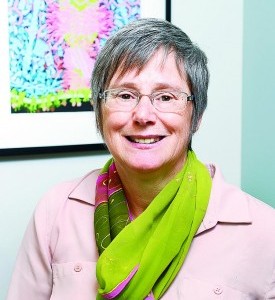
Dr. Sandra L. Schmid, Chair of Cell Biology, was elected to the American Academy of Arts and Sciences for her research on endocytosis – the fundamental process by which cells internalize nutrients and hormones.
Dr. Schmid’s research has advanced the understanding of clathrin-mediated endocytosis (CME), a complex process that is critical for regulating signaling, adhesion, nutrient uptake, immune responses, and synaptic transmission. In this process, clathrin coat proteins assemble and form invaginated clathrin-coated pits (CCPs) on the plasma membrane into which receptors are concentrated. CCPs pinch off to form clathrin-coated vesicles that carry cargo into the cell.
Her lab combines sophisticated molecular cell biology, biochemistry, biophysics, and quantitative live-cell total internal reflection fluorescence microscopy to identify and study factors that regulate CME. She has identified the protein dynamin as the “master regulator.” Dynamin functions to regulate early stages of CME and ensure the fidelity of CCP maturation. At late stages, dynamin assembles into collar-like structures that squeeze the necks of deeply invaginated CCPs. Schmid discovered the mechanics of how these dynamin collars then drive membrane fission and vesicle release.
Mutations in dynamin are linked to human neuromyopathies. More recently, she discovered that changes in dynamin-regulated CME can alter signaling, proliferation, and survival of cancer cells.
Dr. Schmid, past president of the American Society for Cell Biology, holds the Cecil H. Green Distinguished Chair in Cellular and Molecular Biology. Last year, she received an Honorary Ph.D. from Stockholm University, and in March 2016, will receive the Sir Bernard Katz Award for Excellence in Research on Exocytosis and Endocytosis from the Biophysical Society.
Dr. Kim Orth

Dr. Kim Orth, Professor of Molecular Biology and Biochemistry, was named a Howard Hughes Medical Institute Investigator last year for research related to how pathogens manipulate host cells for their own benefit and survival.
Dr. Orth, who holds the Earl A. Forsythe Chair in Biomedical Science and is a W.W. Caruth, Jr. Scholar in Biomedical Research, has made pioneering discoveries regarding the basic biochemical mechanisms underlying many bacterial infections. In particular, her work has identified new ways that invading bacteria hijack and deregulate a cell’s signaling systems.
Her research group found that Yersinia, the bacteria that causes plague, silences an infected cell’s attempts to summon immune cells by chemically modifying a key signaling protein so that it can no longer be switched on. The group’s studies of Vibrio parahaemolyticus, a bacterium that causes food-borne illness, showed that the microbe injects a toxin into host cells that remodels the cell’s membrane structure, causing it to engulf the bacteria. Once inside, bacteria grow and divide until the host cell ruptures.
Studies of another Vibrio toxin by Dr. Orth and her colleagues revealed a previously unrecognized way in which cells chemically modify their proteins to alter their function. The bacteria use the modification, which Dr. Orth named AMPylation, to cause host cells to collapse and die. Her team also discovered a protein that many bacteria use to adhere to cells during the early stages of infection. Researchers are now testing whether they can interfere with that attachment to prevent or weaken infections in patients.
Dr. Joshua Mendell
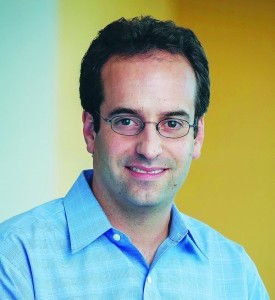
Dr. Joshua Mendell, Professor of Molecular Biology, received the 2016 Edith and Peter O’Donnell Award in Medicine from The Academy of Medicine, Engineering and Science of Texas for research related to the regulation and function of microRNAs in normal physiology and disease. This work, for which he also was named a Howard Hughes Medical Institute Investigator last year, advances scientific understanding of wound healing, tissue regeneration, and diseases such as cancer.
Dr. Mendell, previously named an HHMI Early Career Scientist and a Cancer Prevention and Research Institute of Texas Scholar in Cancer Research, has been a leader in the study of microRNAs, which regulate gene activity, and the mechanisms through which they influence development and disease. For example, his laboratory showed that a well-known, cancer-promoting protein, MYC, directly stimulates production of a specific cluster of six microRNAs that contribute to MYC’s ability to drive tumor formation.
Work from the Mendell lab has revealed involvement of microRNAs in several other critical cancer pathways as well, and the lab recently demonstrated that certain microRNAs are important for wound healing. Dr. Mendell’s team also has uncovered new mechanisms through which the abundance of microRNAs is controlled in normal tissues and in tumors.
Ultimately, Dr. Mendell is interested in developing new therapies for human disease, and his work in animal models has provided persuasive evidence of the therapeutic potential of microRNAs. His team slowed the growth of liver tumors in mice by giving the animals a specific microRNA that was present at lower levels in cancer cells, compared to healthy liver cells. The treatment killed tumor cells but preserved healthy cells, suggesting that such therapies might be tolerated and effective.
Dr. Yuh Min Chook
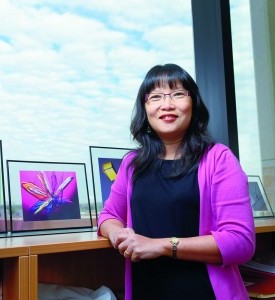
Dr. Yuh Min Chook, Professor of Pharmacology and Biophysics, received the 2015 Edith and Peter O’Donnell Award in Science from The Academy of Medicine, Engineering and Science of Texas for her landmark studies into the fundamental process of protein transport into and out of the cell’s nucleus.
For proper cell function, each of the importer and exporter molecules must carry hundreds of different proteins in and out of the nucleus each day, she explained. Different sets of proteins are carried by specific nuclear transport receptors that recognize specific signals on the proteins. Dr. Chook compared the situation to buses carrying passengers through a tunnel (the nuclear pore complex through which protein cargoes enter and exit the nucleus) but only if the passengers (the proteins) have the proper tickets (signals) for travel.
Advances from Dr. Chook’s laboratory have been instrumental to the development of potential therapeutics that are now the subject of more than 40 clinical trials for a variety of cancers, including those of the blood (leukemia), the brain (neuroblastoma), and the skin (melanoma).
Dr. Chook is a Eugene McDermott Scholar in Biomedical Research.
Dr. Helen Hobbs
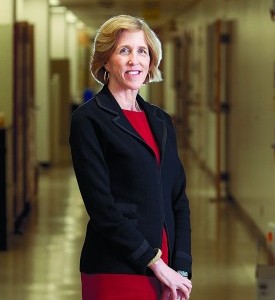
Dr. Helen Hobbs, Director of the Eugene McDermott Center for Human Growth and Development, received two prestigious awards in 2015 related to her research on heart disease and other disorders as a geneticist.
In November, Dr. Hobbs received the Breakthrough Prize in Life Sciences, an international award begun in 2012 by Russian entrepreneur Yuri Milner, Google co-founder Sergey Brin, Facebook founder Mark Zuckerberg, and Alibaba founder Jack Ma. Prizes of $3 million are awarded annually for groundbreaking discoveries in the fields of Mathematics, Physics, and Life Sciences. The prize honored Dr. Hobbs for the transformative genetics research techniques she developed and used to identify key genes involved in lipid metabolism and fatty liver disease.
The honor followed her receipt of the Pearl Meister Greengard Prize in September. That international award from The Rockefeller University recognized Dr. Hobbs’ research to advance the understanding of heart disease and other complex disorders. The work of Dr. Hobbs, also a Howard Hughes Medical Institute Investigator, is credited with leading to new therapeutics to lower LDL cholesterol.
Since 1999, Dr. Hobbs has led the Dallas Heart Study, a longitudinal, multiethnic, population-based investigation of risk factors underlying cardiovascular disease, the nation’s leading cause of death for both men and women. The study, originally funded by the Donald W. Reynolds Foundation, involves thousands of participants and the meticulous collection of data on traits that could be linked to genes involve in heart disease.
Dr. Hobbs holds the Eugene McDermott Distinguished Chair for the Study of Human Growth and Development, the Philip O'Bryan Montgomery, Jr., M.D. Distinguished Chair in Developmental Biology, and the 1995 Dallas Heart Ball Chair in Cardiology Research.

